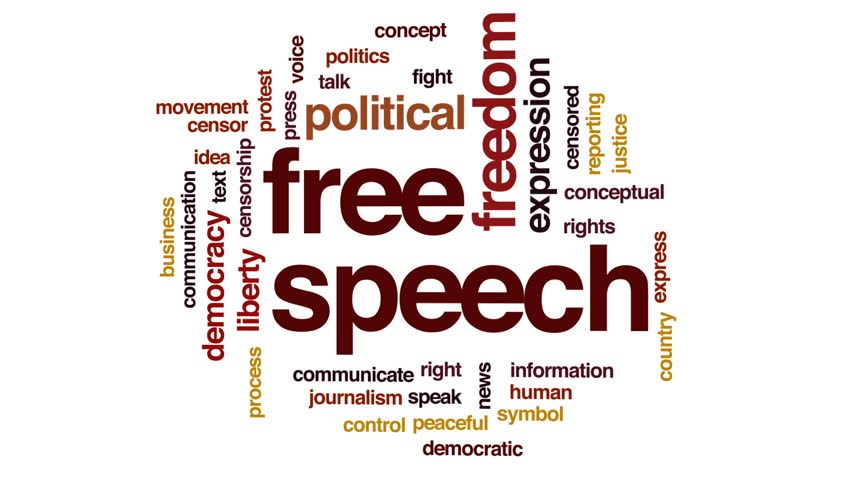Search here

16-Jun-2025 , Updated on 7/21/2025 7:02:47 AM
Is Freedom of Expression Selective in Modern India?
Freedom of expression is a key right in India, protected under Article 19(1)(a) of the Constitution. It allows people to share their opinions and ideas without fear of being censored or punished. But these days, many feel that this right is not applied equally. It seems to be limited by the government, societal pressures, and influential groups. The real question isn't if we have freedom of expression, but who gets to use it and how far it goes.
The Original Idea vs. What We Face Today
The Constitution's creators wanted a strong democracy where free expression was vital for public discussions and progress. Still, they also included reasonable restrictions on this right, mainly to protect public order, sovereignty, and morals. While these limits make sense on paper, they often get applied unfairly and can be misused. Right now, freedom of expression in India feels trapped between legal restrictions, political interests, and social intolerance.
1. Political Bias
When it comes to
political dissent, we see a clear case of selective free speech. Those critical of the government—like journalists, students, comedians, and activists—often find themselves facing serious consequences, such as sedition charges or harassment. Protests, like those against the Citizenship Amendment Act or farmers' protests, faced heavy crackdowns, with many facing online harassment or being booked under strict laws. In contrast, voices supporting the government rarely face the same scrutiny.
2.
Media and Censorship
Press freedom in India has taken a hit over the years. While mainstream media can cover soft news and entertainment, serious journalism that questions authority often gets censored. Independent media and whistleblowers face more challenges than praise, and state-supported narratives often drown out other voices. Journalists can be arrested on shaky grounds, and access to information is frequently restricted, showing that expression isn’t truly free.
3. Religious and Cultural Constraints
Freedom of expression often gets limited when it clashes with religious feelings. Books, films, or art that tackle sensitive topics, especially those involving religion, are often banned or retracted. For instance, movies like Padmaavat faced violent protests, and authors such as Wendy Doniger had their works removed from stores. In many cases, the state aligns with public outcry, putting law and order over free speech.
Social Media: The Good and the Bad
The internet has made it easier for anyone to express themselves, but it also brings about more surveillance and online hostility. While some people get celebrated for their bold views, others face trolling, bullying, or even arrest. Social media companies often remove posts if the government asks, so even online, expression isn’t completely free.
The selectivity of free speech also ties into issues of caste, class, gender, and regional identity. A Dalit activist speaking out against caste discrimination is more likely to face repercussions than someone from a higher caste pushing dominant narratives. Similarly, tribal and local voices often get overlooked in mainstream discussions. The loudest platforms usually belong to the privileged, while the marginalized find it tough to be heard or supported.
In India, freedom of expression is alive as long as it fits in with dominant values or political agendas. It's vibrant in art, literature, comedy, and journalism—but only within certain limits. When a voice steps into controversial or anti-government territory, resistance or censorship quickly follows.
That said, it's not entirely absent. India still has a lively civil society, a dynamic court system, and many independent platforms that keep pushing for more freedom of speech. There have been court rulings that support the right to disagree and overturn unfair censorship. However, these wins are often random and may not be available to everyone.
In Conclusion
Freedom of expression in India today is a complicated issue—it's legally supported but practically limited. It exists in some areas while being restricted in others, often seen through political, social, and economic lenses. The uneven application of this vital right undercuts the democratic values India stands for. For the country to truly honor its constitutional promise, freedom of expression must be upheld equally for everyone, no matter their political views, religious beliefs, or social identities. Until then, the question of whether freedom of expression is selective in modern India will keep getting a tough, but honest, answer: yes.

Individual / Self Employee
I’m Lakshya, a passionate content writer skilled in crafting engaging, SEO-friendly articles, blogs, and web content. I focus on clarity, creativity, and delivering value across diverse topics and industries.
Comments
Join Our Newsletter
Subscribe to our newsletter to receive emails about new views posts, releases and updates.
Copyright 2010 - 2025 MindStick Software Pvt. Ltd. All Rights Reserved Privacy Policy | Terms & Conditions | Cookie Policy